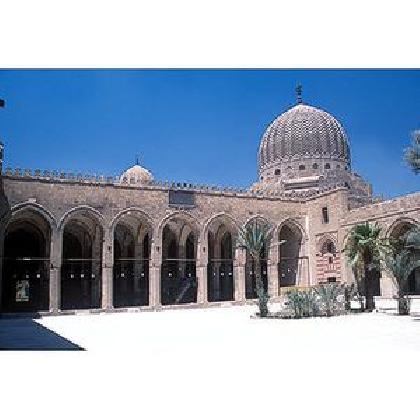
Mustafa Sinan Sabil in Suq El Selah
The Sabil of Mustafa Sinan lies in Suq El-Selah Street close to the Madrasa of Ilgay . It was founded by Mustafa Sinan in 1630 and these buildings w

 The Madrasa-Khanqah of Sultan Barquq lies in El Muiz Le Din Allah Street next to the Mosque and Madrasa of Kamil Ayyub and the Madrasa of El Nasir. This complex was consisting of a Khanqah or hospise for the Sufi students, a Madrasa or a school that was a place for worship and study of Quran and prophetic instructions, and a mausoleum standing in one of the corners of the Madrasa. It was established by Sultan Barquq who was the first Bahri Mamluk to ascend the throne of Egypt in 1382 and the husband of the widow of Sultan Shaban. The historians expound that he managed to assume the power after killing many people and plotting against others. After holding the power he worked hard to defend his throne and protect it from the plots of the Syrian Mamluk Emirs. The style of decoration of the early Burgi Mamluk is not remarkably different from the Bahri Mamluk style.
The Madrasa-Khanqah of Sultan Barquq lies in El Muiz Le Din Allah Street next to the Mosque and Madrasa of Kamil Ayyub and the Madrasa of El Nasir. This complex was consisting of a Khanqah or hospise for the Sufi students, a Madrasa or a school that was a place for worship and study of Quran and prophetic instructions, and a mausoleum standing in one of the corners of the Madrasa. It was established by Sultan Barquq who was the first Bahri Mamluk to ascend the throne of Egypt in 1382 and the husband of the widow of Sultan Shaban. The historians expound that he managed to assume the power after killing many people and plotting against others. After holding the power he worked hard to defend his throne and protect it from the plots of the Syrian Mamluk Emirs. The style of decoration of the early Burgi Mamluk is not remarkably different from the Bahri Mamluk style.